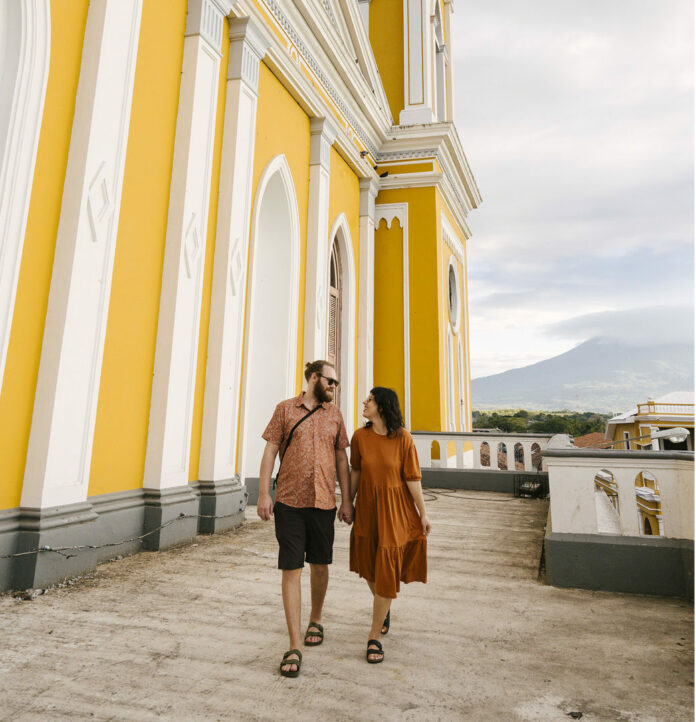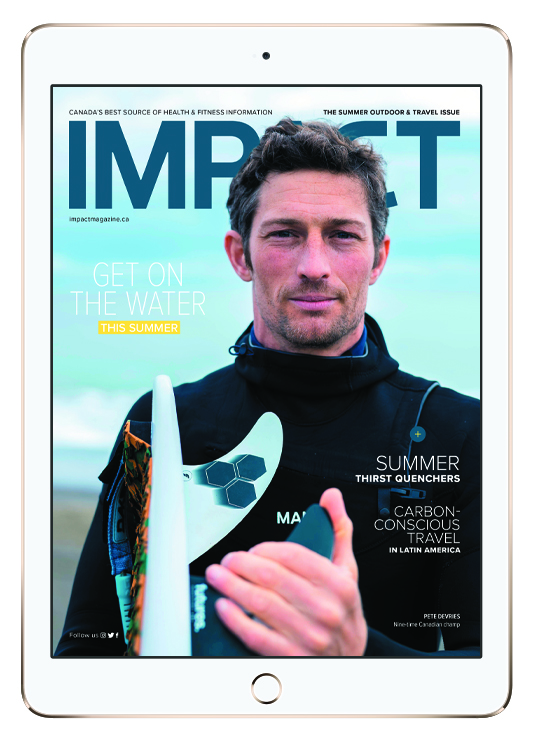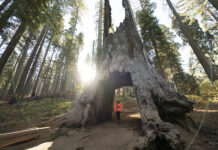
In the summer of 2021, we sat on a picnic blanket looking out to Vancouver’s False Creek and wrote a list of all the places we wanted to travel. Our list of countries grew longer and the sun disappeared behind the North Shore mountains. We spent more evenings in the park revisiting the list until it morphed into a massive five-year timeline with 15 separate trips planned.
We realized that our list did not fit into any of our budgets: financial, time off, or carbon footprint. Our environmental impact has been top-of-mind since we were in our teens, so we began flirting with the idea of carbon-conscious full-time travel.
As the climate crisis worsens, it becomes more important everyday to curb and offset any emissions that contribute to the warming of our planet. Carbon-conscious travel is not carbon-neutral travel, it is being aware of the carbon cost of our travels. In this context, the carbon cost is the carbon equivalent of all greenhouse gases produced by our actions.
With all of this in mind, while Alia was busy planning our travels, Shawn got to work building a carbon calculator we could use to measure the impact of our travels. With this calculator we are able to track our carbon through the four largest contributors: flights, accommodation, food and other transportation. By having concrete numbers when making decisions we can properly weigh our options.
AVOID FLYING WHEN POSSIBLE
Our first lesson came on day one of our travels. We started our adventure at the end of January 2022 with a long flight from Toronto to Nicaragua via El Salvador. This cost us a whopping 672 kilograms each. For context, our daily average for our entire trip is 21 kg. This means our first day was 32 times more costly than the rest of our trip.
Flying is one of the most unavoidable parts of travel and one of the largest contributors to your carbon footprint. Avoiding flying when possible is ideal, but for most people (us included), some flights are inevitable.
Once in Nicaragua we took a look at the calculator and set to work trying to balance this rocky carbon start. The obvious option for us was eating plant-based — something we had been doing for years prior. Based on our research, we found that eating meat with most meals equates to about 15 kg a day, a mix of meat, vegetarian and vegan meals was about 10.2 kg a day, a vegetarian diet was 5.4 kg a day and a fully plant-based diet was just 2.1 kg a day. So about 52 days of eating vegan would completely offset that flight.
EAT PLANT-BASED MEALS
Eating vegan in Latin America is a little different from what we’re used to in Vancouver. We can’t just walk into the grocery store and have our pick of our favourite vegan cheeses. However, if you know where to look, there is a flourishing vegan food scene almost everywhere. By opening Happy Cow, typing in ‘vegan’ on Google Maps, finding blogs like ours, and asking around at your accommodation, recommendations inevitably pop up. Nearly every town and city we stayed in had at least one vegan/vegetarian restaurant we could frequent. And aside from that, every little local place we visited was happy to accommodate us. We were almost always able to get a plate of something vegan — at least rice, beans, avocados, and plantains are plentiful in Latin America.

TRAVEL SEQUENTIALLY
Other than eating vegan, the next most impactful strategy we’ve used is traveling slowly and sequentially. What we mean by this is keeping our trip in order of adjacent locations. If we flew in and out of Central and South America, returning home between destinations, our carbon footprint would be astronomically higher than if we took our time and did it all in one go. Relative to the large carbon footprint of getting between destinations, our meals and accommodation, the environmental impact of how we get around our destination is nominal. We walk and use public transportation when it’s safe and accessible, but when we feel the need to call a ride-share or book a shuttle, it doesn’t weigh too heavily on our overall budget.
We started in Nicaragua’s capital and then worked our way via bus through six destinations throughout Nicaragua and Costa Rica, ending up in San Jose. From this point, before we could continue on to Panama, Colombia, Ecuador, and Peru, we were faced with one of our more difficult carbon-conscious travel decisions. The first issue was Panama City being a 17-hour bus ride from our last stop in Costa Rica. The second issue was the Darian Gap, a roadless, uncrossable swath of jungle that separates Panama and Colombia. We could either take a short flight or a full-day bus ride and a five-day journey on a catamaran through the open ocean.
Inarguably, the easier option would be to take advantage of Copa Airline’s Panama City layover program. You can do up to a six-day layover in Panama City when flying from Costa Rica to Colombia. The flights would cost us an extra 241 kg each. We weighed the options and decided the lower carbon option was a tad too adventurous for us, and this time we put our time, comfort and safety over our carbon footprint.
PURCHASE CARBON OFFSETS
The final way we balance our carbon footprint is through the purchase of carbon offsets. There are many programs that offer carbon offsets. Some offset carbon by preserving ecosystems that safely house carbon, some help you limit the allowed emissions of polluting corporations and some organizations use new technologies to literally suck carbon out of the atmosphere and store it safely. They all have different costs and benefits but work on the same principle. This is one of the main reasons being conscious and calculating our footprint is so important; once you know your actual footprint, there are many ways to reverse it.
We’ve had some big wins but also some costly flights. Overall, we’re very happy with how our full-time travels have gone so far. When we set out, our goal was to travel at or below the carbon footprint of the average Canadian, which is around 41.2 kg a day. We’ve made it all the way from Nicaragua to Peru with a 21 kg a day average. We weren’t expecting to be able to keep such a low footprint when we first set out, but it’s been incredibly rewarding to see the world while keeping her future in mind.
For us, carbon-conscious travel is really about doing your best. If you can take long night buses, eat plant-based, travel for months at a time and stay in shared dorms everywhere you go, great! But if you have a bad back, have other dietary restrictions that make plant-based eating difficult, have a job or family you can’t leave for long, or can’t imagine sleeping in a room full of strangers, that’s alright too. The idea behind carbon-conscious travel is taking your carbon footprint into consideration, along with your safety and comfort, to choose the mode of travel that is best for you and the planet. Naysayers will say that if you care about the climate crisis you shouldn’t travel at all, but we believe it’s important to actually explore the world to see for yourself why it’s worth saving.
You May Also Like
Traveling the World with IMPACT
Top Vegan Travel Destinations
Photography by Alia Youssef

Read This Story in Our 2022 Summer Outdoor & Travel Digital Edition
Cold Water King, Core-Centric Fitness, Prepare for Hiking Season, Mountain Bike Fundamentals, The Simple Ways Movement Gives Us ‘Hope’, recipes and much more!















